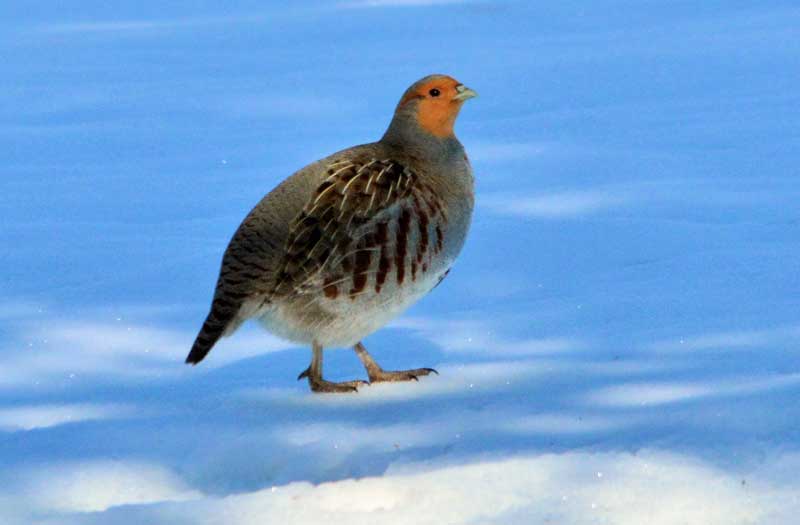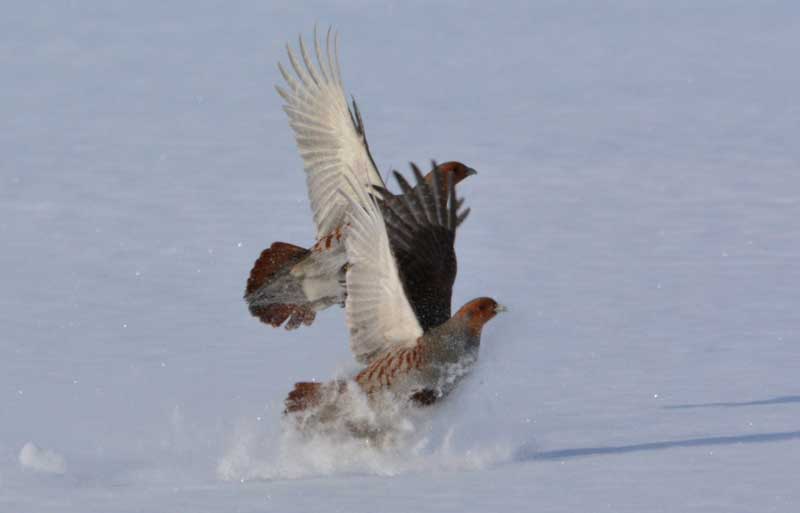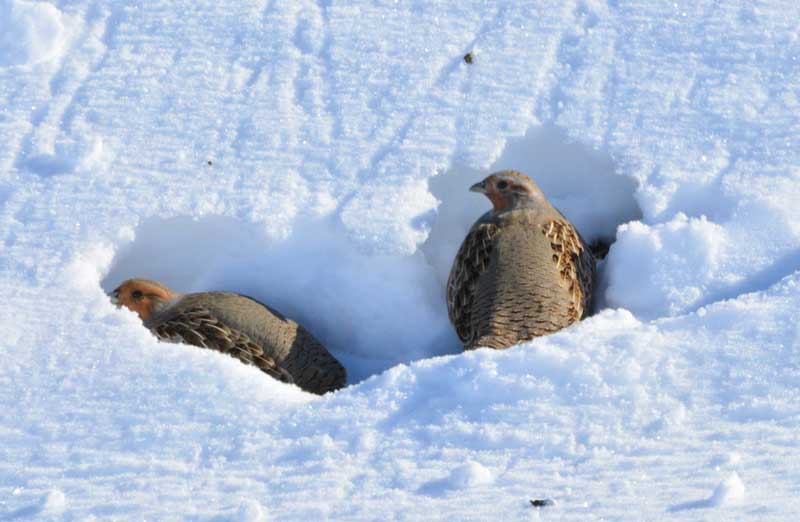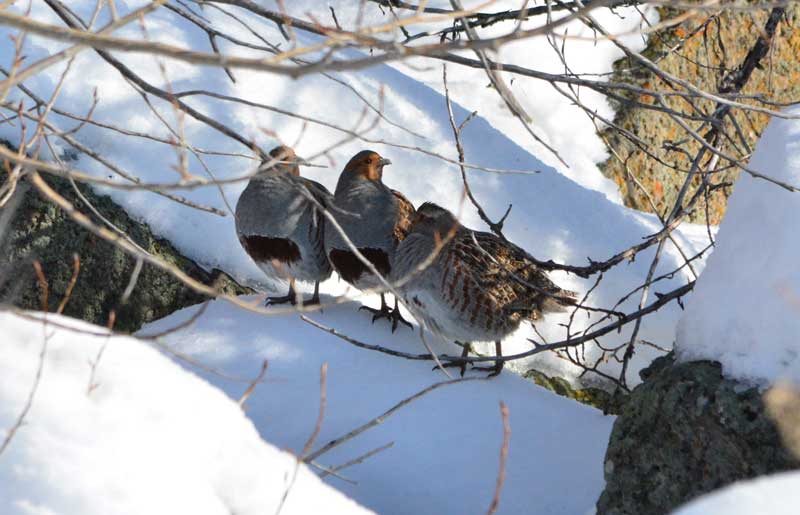SCHIESS: Hidden surprises under the snow
Published at
As I walked out to fill my bird feeders in the backyard, the explosion of four Gray partridge from under the 10 inches of new fallen snow scared the jeepers out of me.
The explosion was followed by a mini snow blizzard created by the beating of eight wings in the bitter cold morning.
“You missed a good chance of having a heart attack for nothing,” I thought to myself as my heart returned to its natural rhythm. I had seen the bird’s tracks under the feeders a couple of days before, but I had no idea they were camped under the feeders in tiny snow caves.
Walking back to the house, my thoughts went back to growing up in Teton Valley when we called these speedy small birds Huns or Hungarian partridges. Now known by most people and in the Idaho Department of Fish and Game brochure as Gray partridge, they are a borrowed bird from Europe.

Native to central Europe, including Hungary, they were introduced to the United States in significant numbers in the early 1900s. Now these foreign aliens can be found all over Idaho, except in the high evergreen covered forests.
It’s not clear whether Idaho’s present population came from Washington and Oregon’s transplants, from escapes or releases from gamebird farms or from the natural spreading of birds from the central states. Many private commercial hunting preserves now raise them and then release them for clients to shoot.
Being mostly grain eaters, they are usually found near grain fields or wild grain vegetation, but my visitors had found the leftovers from the bird feeders. With Idaho’s varied landscape of agriculture, sagebrush flats filled with native and cheat grass and brush-laden ravines with wheat producing native grains — huns can be found almost everywhere.
Gray partridge are probably Idaho’s most unpredictable game bird that is hunted as they are generally classified as targets of opportunity rather than planned hunting. Most are harvested while hunters are pursuing other species like Chukers, sharp-tailed and sage grouse. The fly considerable distances when flushed or when they are searching for food or water and never return to the field where they were originally found.
The Idaho Department of Fish and Game once kept an estimated harvest of them through random telephone surveys. Since 1991 their highest estimated harvested was 109,300 in 1996 with some 55,000 in 2006. The lowest estimated harvest was in 2002 with only about 26,000 harvested statewide.

Most huns are harvested by flushing. This is interesting as in Europe in the 1700s only the cocks were legal to shoot. Since the only recognizable difference between the two sexes is a dark horseshoe pattern on the belly of the males, meant the birds had to be flying toward the hunters to be identified. The gunners would stand on one end of a field while “beaters” would work the field flushing the birds toward the hunters.
Their numbers vary greatly from year to year as a dry spring will allow a pair to produce more chicks than a wet one. Predation and destruction of nesting habitat like burning ditch banks limit production.
It is interesting to note, while starting to nest, the hens will cover the first laid eggs with dirt to preserve their fertility until she starts to sit.
I am always excited when I see covey of huns – only give me a little notice. Busting out of new-fallen snow with no tracks or warning could cause heart failure and I am not ready for that trip. But I will be more observant for little mounds in the snow near my bird feeders in the future.

Living the Wild Life is brought to you by The Healing Sanctuary.


